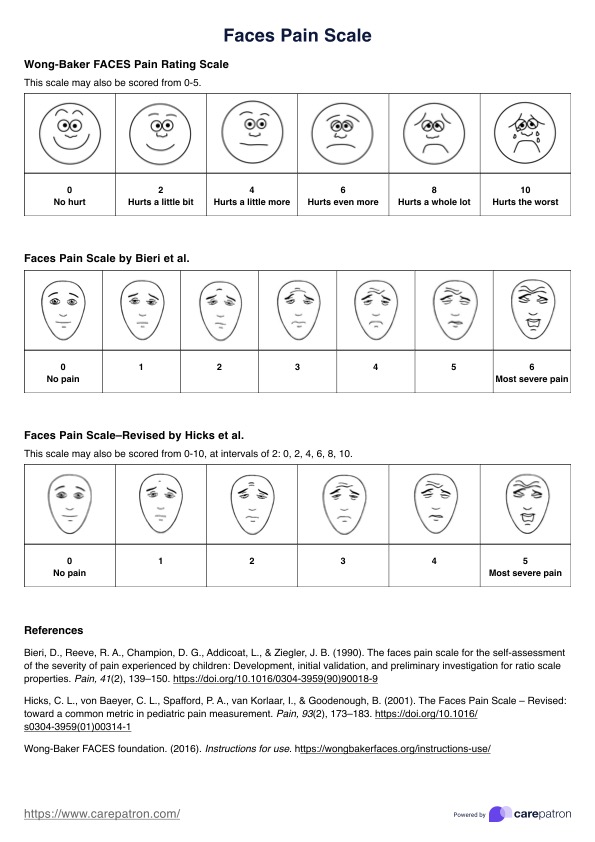The FACES Pain Scale helps patients, especially children and individuals with communication difficulties, express their pain severity using facial expressions. It provides healthcare professionals with a reliable and straightforward way to assess pain and plan effective pain management strategies.

Faces Pain Scale
Improve how you assess patient pain with our FACES Pain Scale template. Better understand their pain severity and improve how you plan pain management.
Faces Pain Scale Template
Commonly asked questions
The 0-5 face pain scale is associated with several versions, including the Wong-Baker FACES Pain Rating Scale and Hicks et al.'s revision of Bieri et al.'s original scale. The Wong-Baker scale scores pain at intervals of 0, 2, 4, 6, 8, and 10, while some versions, including Hicks et al.'s, simplify it to 0-5 to align with specific clinical needs.
The FACES Pain Scale is suitable for children as young as three years old and for individuals with communication barriers, such as cognitive impairments. It is a helpful tool for any patient struggling to express their pain verbally, including older adults or those with developmental disabilities.
EHR and practice management software
Get started for free
*No credit card required
Free
$0/usd
Unlimited clients
Telehealth
1GB of storage
Client portal text
Automated billing and online payments











